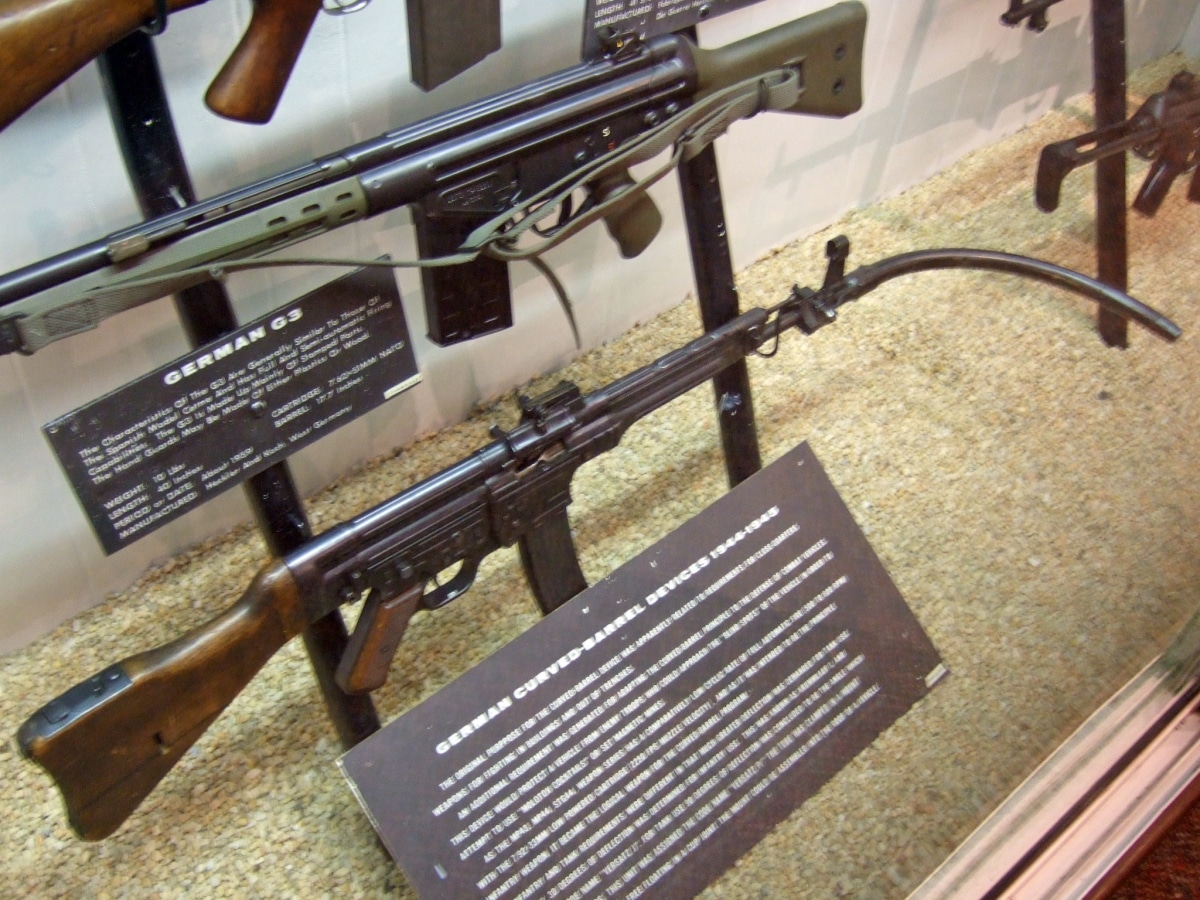The Krummlauf, a bent-barrel attachment for the StG 44, one of the lesser-known weapons from Nazi Germany. The Krummlauf, which was developed in 1944 during a desperate period of the war for the Germans, had different variants and attempted to add different degrees of curve to the barrel of the StG 44, but it ultimately failed due to various technical issues.
Key Points:
- The Krummlauf was a bent barrel attachment for the StG 44, often credited as the first assault rifle. It was developed in 1944 when the war was not going well for the Germans.
- Variants of the Krummlauf added different degrees of curve to the barrel, including 30-, 45-, 60-, and 90-degree versions. The 30-degree variant was the most commonly produced.
- The Krummlauf came in both infantry and armor variants. The infantry version was designed to allow soldiers to shoot above or around cover without exposing themselves to enemy fire.
- A periscope-style optic was used with the infantry version to guide the aim. However, there was no way to aim the armored version, which was designed to deter approaching infantry.
- The Krummlauf was ultimately deemed a failure. It was found to create significant gas pressure, had a short barrel life, its bullets often broke at the bend, and it was highly inaccurate.
- Despite the high innovative reputation of German arms design, the Krummlauf serves as a reminder of their more creative but less successful creations.






